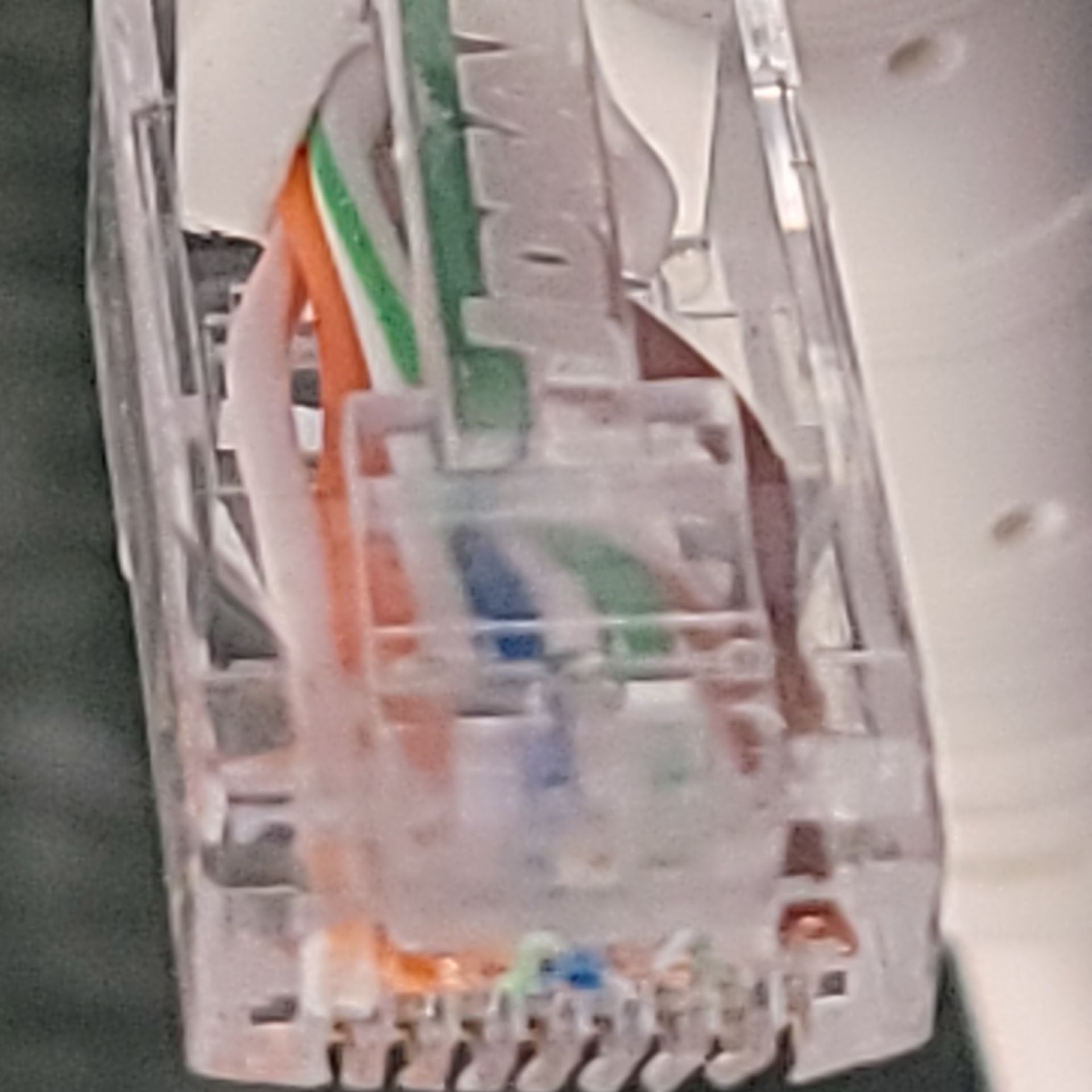Firmware Updates
Firmware Updates

On a particularly eventful day at a new client's residence, the installation of basic security items prompted an in-depth exploration of network vulnerabilities and the critical role of up-to-date firmware in ensuring cyber resilience. The clients, long-time residents in a secluded neighborhood, sought to address peculiar occurrences of unfamiliar individuals frequenting their property for inexplicable reasons. Following a consultation to determine their security needs, a straightforward solution involving the installation of Ring motion-activated lightbulbs and a Ring camera was proposed - a practical and fundamental security measure.
Delving deeper into the network infrastructure, a troubling picture emerged. The client's aged modem, operating at half the subscribed speed and deprived of essential firmware updates from the Internet Service Provider (ISP), stood as a glaring security risk. In addition, their Netgear AC1750 router (model R6400v2) boasted both 2.4GHz and 5GHz bands, yet the light indicating 5GHz operation remained extinguished. With the revelation that the 5GHz band had not been fully configured, presumably by the client's son, it became apparent that optimizing network band allocation was necessary.
Upon further investigation, it was discovered that the router's security posture was far from ideal. A mere four-character password left the network vulnerable to various cybersecurity threats, underscoring the importance of robust password practices. Moreover, the outdated firmware on the router raised concerns about potential vulnerabilities and cyber-attacks, necessitating immediate attention to fortify the network against malicious intrusions.
Before delving deeper into the intricacies of firmware and its significance for network security, it is essential to recognize the pivotal role firmware plays in underpinning the functionality and security of networking hardware. As the unseen guardian of network operations, firmware governs essential functions, establishes connections, and implements security protocols to safeguard against cyber threats and ensure optimal performance.
In the realm of cybersecurity, firmware updates serve as crucial safeguards, addressing known vulnerabilities, enhancing performance, incorporating new features, and rectifying bugs. Just as with any software, firmware is susceptible to exploitation if left unpatched, making regular updates imperative to bolster network security and resilience.
As the narrative unfolds, the focus remains on the pivotal role of firmware updates in fortifying network security. By maintaining vigilance, adopting best practices, and prioritizing firmware updates, homeowners can safeguard their networks against evolving cyber threats and ensure a robust defense against potential vulnerabilities. Stay tuned as we delve deeper into the realm of firmware and its indispensable role in securing modern networks.
Router firmware is a type of software that runs on your router's hardware, controlling its functionality and performance. It acts as the operating system for your router, allowing it to manage network traffic, establish connections, and enable various features such as security protocols and network settings.
Firmware updates are released periodically by router manufacturers to address security vulnerabilities, improve performance, add new features, and fix bugs. Just like any software, router firmware can have issues that need to be patched, so updating it regularly is crucial to ensure the security and stability of your network.
The frequency of checking for updates depends on the manufacturer and the router model. Some routers have automatic update features that can be enabled to ensure you receive the latest firmware as soon as it's available. General rule of thumb, it's a good idea to check for updates at least once every few months to keep your router up to date with the latest improvements and security patches.
Many people choose to purchase their own router vs renting the router from the ISP. While I totally agree with this principle at face value. The customers should know this now means they are taking responsibility for the security of their home network. And if they fail to check on their firmware from time to time, they could be leaving themselves open to a security risk.
If people never update their router firmware, they expose themselves to various security risks that could compromise their network and sensitive information. Some of the security risks associated with not updating router firmware include:
1. Vulnerabilities Exploitation: Hackers are constantly discovering and exploiting vulnerabilities in older firmware versions. By not updating, users leave themselves open to potential cyberattacks that could result in unauthorized access to their network.
2. Malware Infections: Outdated firmware may lack essential security patches to protect against malware attacks. This leaves the network vulnerable to infections that can steal data, spy on activities, or disrupt network operations.
3. Denial of Service (DoS) Attacks: Without firmware updates, routers may be more susceptible to DoS attacks, where attackers overwhelm the network with traffic, causing it to slow down or become unresponsive.
4. Insecure Authentication: Older firmware versions may have weak authentication mechanisms that can be exploited by attackers to gain unauthorized access to the network or router settings.
5. Privacy Risks: Unpatched vulnerabilities in the firmware can lead to privacy breaches, allowing attackers to intercept sensitive data transmitted over the network.
6. Botnet Participation: Infected routers with outdated firmware are often recruited into botnets, turning them into tools for cybercriminals to launch large-scale attacks or perform malicious activities without the user's knowledge.
By neglecting firmware updates, users risk not only their own security but also contribute to a larger threat landscape where unsecured devices can be leveraged for widespread attacks on other systems and networks.
Ok back to my client, and the morning of the installation. I started the firmware update and thought for sure this would resolve any issues. After the reboot, the 5ghz was still off. I checked the settings, and it was turned on as far as the Netgear router was concerned. Now I will say I don’t have much experience with Netgear other than the two or three I have owned over the years, so my assumption at this time is that the radio array has simply failed. We proceeded with the rest of the installation, and everything went fine. We left at around 1 P.M job was completed, and happy clients playing with the new toys. However at 5 pm that night I received a text message from the client detailing some issues. After some trouble shooting via text I knew a virus of somesort was present. Not knowing if I would have the internet at their house now, I decided to download the firmware again on my laptop, with the thought process of a factory reset being my only hope, and taking something back that far might cause a connection problem. Upon the download from the Netgear web page, windows spotted and labeled it as a “Virus”. Of course, my concerns are growing, and I have to get across town to at least get the router into limp mode so they can have internet over the weekend in case I cannot save this older router. As I drove across town my wife the always amazing tech, did some “Googleing” (I think this is a word now). And discovered this was a common issue, as Microsoft Defender is not perfect, and makes a mistake from time to time. (The detailed answer as to why is not relevant to dive into for this blog). Now I am at the client's house armed with the paperclip for a factory reset, or two…. Mabe three. Finally, get it back, set the SSID and passwords to their previous settings, of course with a new and more secure password. Secure enough they should be good for the next 226 years for the common algorithms to break. As I returned home, the problem was solved my wife reminded me of the time she pet-sat for her Uncle Chris. Sorry, Chris, we are using you as an example. While staying at her uncle’s house, she of course connected to the Wi-Fi. This was when my wife was in her second year of college for computer programming, she was likely at a heightened sense of awareness. Shortly after her phone started getting a lot of pop-ups. Bombarding her phone with all sorts of the kinds of websites set up and designed to get you clicking on them, and that starts to worm their way into your web browsers. With the use of that amazing search tool “Google”, she quickly found some possible reasons for the issue, after a quick discussion a new router was purchased and setup was done more securely. Problem solved. At least for her, I guess we should ask Uncle Chris if he has checked that lately because it has been 8 years.
Let's talk about some things a homeowner might experience if they have a virus on the router.
If someone's network or router is infected with a virus, they may experience a variety of issues and symptoms that could indicate a security breach. Some common signs of a virus on a network or router include:
1. Unexplained Network Activity: An infected router may exhibit unusual network activity, such as high data usage or connections to suspicious IP addresses, even when no devices are actively using the network.
2. Slow Internet Speeds: Malware on a router can cause a significant decrease in internet speed, leading to slow browsing, downloads, and streaming.
3. Device Connectivity Problems: Devices may have difficulty connecting to the network or experience frequent disconnections due to the virus interfering with network communications.
4. Unexpected Pop-ups or Redirects: Users may encounter pop-up ads, browser redirects to unfamiliar websites, or unwanted changes to browser settings as a result of malware on the network.
5. Security Warnings: Web browsers or security software may display warnings about potential security risks or malicious activity stemming from the infected network.
6. Unauthorized Access: Hackers gaining control of the router through malware can lead to unauthorized access to sensitive information, such as login credentials, financial data, or personal files.
7. Strange Behavior from Connected Devices: Devices on the network may exhibit unusual behavior, such as unexpected restarts, crashes, or strange pop-up messages, indicating potential compromise.
8. Network Outages: Malware can disrupt network connectivity, causing intermittent outages or complete loss of internet access for all devices connected to the router.
If someone suspects their network or router has been infected with a virus, it's important to take immediate action by isolating the affected devices, scanning for malware using antivirus software, and updating the router firmware to patch any vulnerabilities that may have been exploited by the virus.











